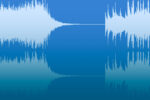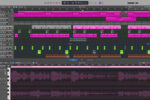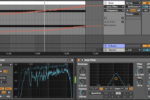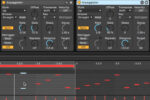How to increase creativity in your music
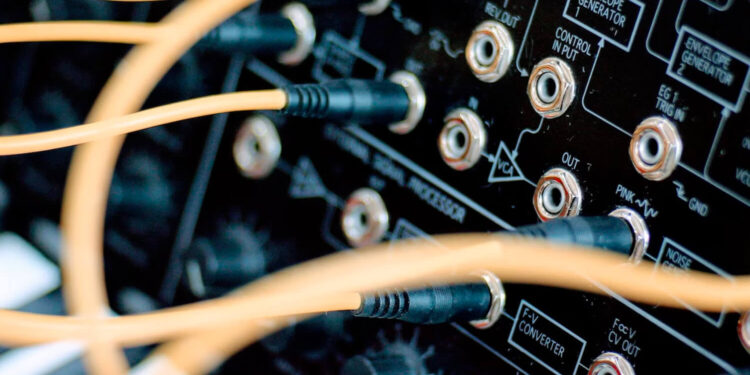
Increasing creativity in music can be a challenge. But there are some key techniques you can use.
There’s something extremely seductive about the word ‘creativity’. It speaks of inventiveness, originality and the capacity to make something new. It promises to offer the world something it doesn’t have already and, somehow, it even sorts people into two groups – those who identify as creative and those who don’t.
What does it mean to be creative?
And yet, the process of actually being creative is much less easy to define. In artistic terms, whether you make films, take photographs, build furniture, design video games or make music, the ‘creative industries’ would describe themselves broadly as ‘industries which make things’.
But, of course, within that broad description, there’s a huge sliding scale of how creative you need to be in order to ‘make something’. We need to eat to survive but there is a huge difference between making a piece of toast and spreading butter on it to dining on a gourmet dish in a five-star restaurant. And, of course, there’s a big difference in the creativity and inventiveness required to make those meals.
Creativity in music
Let’s focus on creativity in music but perhaps take from that example that it’s perhaps not enough simply to be able to make anything in order to be creative but instead how much you strive to produce something original.
That word is going to need some consideration too, as the vast majority of music treads an interesting line between originality on one hand and the need to to operate within the boundaries of a particular genre or artistic brief on the other.
Let’s take an example.
Let’s suppose someone said to you that they wanted you to write a Tech House track for a specific DJ set they were putting together. To do this, you need to know:
- what Tech House ‘sounds like’
- the tempo range which covers that genre
- the kinds of sounds which tend to be used
- the structure
- the length of track required
- and even the kinds of drum sounds and bass patterns which often feature too.
Put like that, writing a Tech House track almost sounds like a to-do list of items which must be included for your track to meet the brief.
Does that mean it’s impossible to write a creative, original Tech House track? No, it doesn’t. But it does mean that creativity – in this context – means more than simply writing the wildest, most boundary-free track imaginable.
The bounds of creativity in music
If you write a track which samples your vacuum cleaner, time-stretches the recording to 4 times its original length and then passes the whole mix through a 20 second reverb, you might make something sonically amazing – but it won’t be a Tech House record!
But it’s also true that if your response to the brief is to write a track which copies – as closely as possible – your favourite Tech House record, lifting structure, hooks, basslines, choices of drum sounds and everything else, to produce the most careful ‘audio copy’ of someone else’s work you can, you’re taking a hugely uncreative approach.
There’s nothing creative about stealing someone else’s ideas and, in truth, few things more humbling than someone hearing your track and calling you out on its similarities to another track.
How to increase your own creativity in music
So if you’re happy with the notion that creativity, for most of us who make ‘commercial music’ in some form or other, lies in the fertile ground between completely free, unstructured sonic art and a facsimile of someone else’s work, how can you increase creativity in the music you make?
Constraints can help
Most creative people enjoy the challenge of being original within the confines of their chosen musical genre. And they enjoy it, usually, by accepting there might be some constraints in terms of what they’re being asked to write whilst pulling as hard against those constraints as they can.
Let’s take the idea of melody, for example. If you were going to write a hook for your track, don’t listen to one other record’s hook and copy it, but instead listen to 100 different hooks – from a variety of musical styles – and ask yourself some searching questions about what you like about the ones which really stand out:
- Do they start high and drop?
- Or do they rise?
- Are they rhythmically simple, or complex?
- How many notes do they use?
- Do they feature wild leaps between those notes?
- Do they sound smooth or spiky?
- And most importantly of all – how do they make you feel?
Feeling is key to creativity in music
This is perhaps the crucial point. We often listen to music for its capacity to enhance or alter our mood and, in the broadest possible terms, if you’re able to write a track which makes you feel like the tracks you enjoy, whilst using melodies, harmonies and rhythms of your own, you’re on a pathway to creativity.
Be creative with subtle changes
Sometimes, it doesn’t require a whole lot to turn a track into something which is truly yours.
For instance, when programming beats, why not experiment with ghost notes – quieter, more incidental hits which either directly precede or follow the main, core elements of your loop. Give these ghost notes their own tone, using EQs and Filters, or their own space, with reverb, and then gently mix them in with the Kick and Snare sounds you’re using.
Or try a slightly swung feel in your hi-hat programming, or spread that hat part over 2 or 3 different sounds so that it sonically evolves away from the expected.
These suggestions might sound like quite a discreet, small place to take your first steps along the road to creativity but often, what feels intimidating is to feel like every musical move you have to make needs to reinvent the creativity wheel. But that’s almost never the case.
Ideas to drive musical creativity
Creativity can come from an unexpected chord progression (where perhaps you use inversions of chords so that the bass note isn’t always the root note of the chord, for instance), or an inverted melodic shape.
Blending synths
It can come from blending three different synths to play your hook (rather than just one), or from using unexpected effects chains when you’re mixing.
MIDI into audio
Maybe it comes from turning your MIDI parts into audio so that you can slice them up, reverse small sections, or split the part across three different audio tracks, processing different sections of a hook with contrasting effects.
Embracing randomization
Maybe it comes from experimenting with plug-ins which allow for Randomisation of parameters, so that with the click of your mouse, you can see what unexpectedness your plug-ins can offer back to you as a potential start point for something new.
Mixing it up
One technique which can be really effective is to save your finished, mixed project with a new name, create a new, empty track at the bottom of your arrangement and then to grab every single track in your mix and drag it down, complete with any automation, to the track below.
Most sounds won’t sound good and your mix will almost certainly lack any coherence but somewhere, something weird and inspiring will happen. Maybe your bassline will be passing through your lead vocal effects chain and will sound rich and full, or your synth pad will pick up the parallel distortion channel you created for the main hook and become unexpectedly edgy. Solo each track in turn and mine it for a possible start point for your next track.
Driving creativity with collaboration
There’s also no doubt that creativity and inspiration often strike when you collaborate with someone who brings new tastes and ideas into your studio. They might like to work from a different foundation, or bring a fresh loop to kickstart a new idea.
The simple fact that you haven’t had to make the very first musical move is often enough to take the creative process in a different direction.
Listen to more music
Perhaps the last thing to consider is that if you’d only ever heard a single piece of music and you were asked to create a new track of your own, you’d find it impossible not to be heavily influenced by that track. How could you not be?
It would be all of the music that you know, after all. So it stands to reason that originality and creativity is likely to be promoted if you can bring ideas from all kinds of musical genres and styles to your own productions.
To go back to the Tech House example, what might happen if the track you are setting out to write could be influenced by Techno, Hip-Hop, Pop, Metal or even Classical Music.
What might one sound, or one chord, or one melodic fragment from any of those genres sound like within the context of your Tech House track?
The answer is… different.
And, in all likelihood, fresh and creative too.
Try to deepen the gene pool of your musical ideas with as much listening as you can. The creative part of your brain will thank you for providing it with a richness of ideas.



